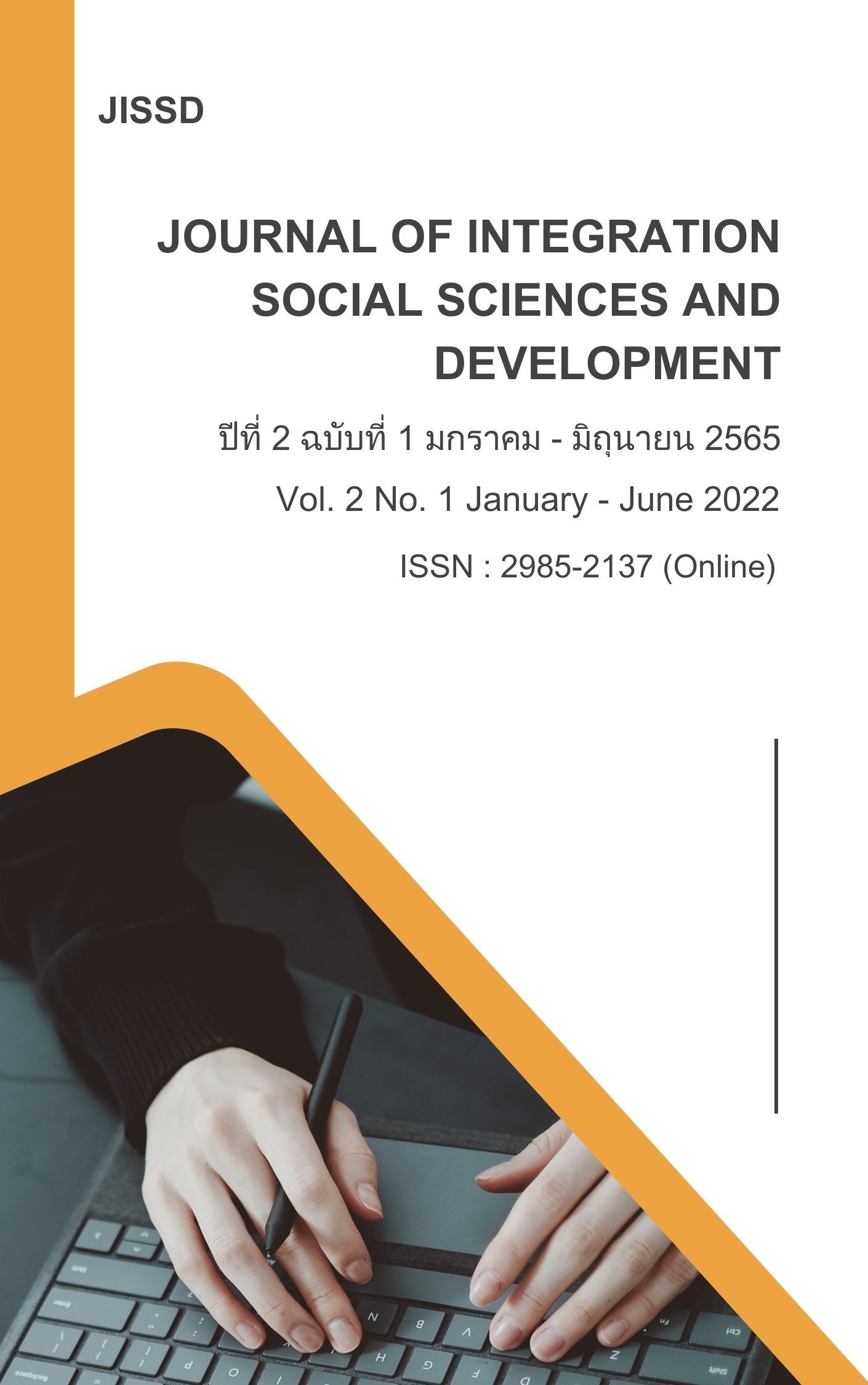Innovative Leadership with The Effectiveness for Schools Under The Office of Udon Thani Primary Educational Service Area 3
Main Article Content
Abstract
The objectives of this research are 1) to study the innovative leadership level of educational institution administrators under the Udon Thani Primary Educational Service Area Office, Area 3, 2) to study the effectiveness of educational institutions under the Udon Thani Primary Educational Service Area Office, Area 3, and 3) to study the relationship between innovative leadership and the effectiveness of educational institutions under the Udon Thani Primary Educational Service Area Office, Area 3 Udon Thani Primary Education Area 3. The sample used for this research were 351 persons from school administrators for 133 persons by purposive sampling and from the teachers under the office of Udon Thani Primary Educational Service Area 3 in academic year 2023 by stratified and proportion samplings. The instruments using for this research were 5 rating scales questionnaires with the confidence at 0.97 The statistics using for data analysis included mean, standard deviation, and correlation of pearson product moment. The results of findings were as follows: 1) the innovative leadership for school administrators was in the highest level. 2) the effectiveness for the schools under the office of Udon Thani Primary Educational Service Area 3 was in the highest level. 3) In general, there is a significantly high positive correlation at the .01 level of statistical significance. The aspect with the highest correlation is risk management with the ability to produce students with high learning effectiveness (rxy = .703).
Article Details
References
ชูศรี วงศ์รัตนะ. (2560). เทคนิคการใช้สถิติเพื่อการวิจัย. กรุงเทพฯ: อมรการพิมพ์
ทิพวรรณ สำเภาแก้ว. (2560). ปัจจัยการบริหารที่ส่งผลต่อประสิทธิผลของสถานศึกษา สังกัดสำนักงานเขตพื้นที่การศึกษาประถมศึกษา สระบุรีแก้ว เขต 2. (ครุศาสตรมหาบัณฑิต, มหาวิทยาลัยราชภัฏราชนครินทร์).
บุญชม ศรีสะอาด. (2560). การวิจัยเบื้องต้น. (พิมพ์ครั้งที่ 10). กรุงเทพฯ: สุวีริยาสาส์น.
บุญเลิศ แสวงทอง. (2552). สภาพการดำเนินงานและความต้องการใช้เทคโนโลยี สารสนเทศและการสื่อสารเพื่อการศึกษาของสถานศึกษาขั้นพื้นฐาน ช่วงชั้นที่ 3 - 4 สังกัดสำนักงานเขตพื้นที่การศึกษากาญจนบุรี. (ครุศาสตรมหาบัณฑิต, มหาวิทยาลัยราชภัฏกาญจนบุรี).
ประวัติ ยงบุตร. (2556). การพัฒนารูปแบบการบริหารความเสี่ยงทั่วทั้งองค์กรในสำนักงานเขตพื้นที่การศึกษาประถมศึกษา. (การศึกษาดุษฎีบัณฑิต, มหาวิทยาลัยนเรศวร).
พอรุ้ง แสงนวล. (2563). การบริหารความเสี่ยงกับประสิทธิผลของโรงเรียน สังกัดสำนักงานเขตพื้นที่การศึกษามัธยมศึกษาเขต 9. วารสารศิลปการจัดการ, 4(3), 672–685.
ภารดี อนันต์นาวี. (2553). หลักการแนวคิด ทฤษฎีทางการบริหารการศึกษา. (พิมพ์ครั้งที่ 5). ชลบุรี: มนตรี.
มณีรัศมิ์ พัฒนสมบัติสุข. (2564). การตรวจสอบคุณภาพเครื่องมือวิจัยทางการพยาบาลและสังคมศาสตร์. วารสารเครือข่ายวิทยาลัยพยาบาลและการสาธารณสุขภาคใต้, 8(2), 329-343.
สาธร ทรัพย์รวงทอง. (2566). รูปแบบภาวะผู้นำเชิงนวัตกรรมของผู้บริหารสถานศึกษา สังกัดสำนักงานคณะกรรมการการศึกษาขั้นพื้นฐาน. วารสารวิจัยวิชาการ, 6(3), 309–324.
สุกัญญา แช่มช้อย. (2560). การบริหารสถานศึกษาในยุคดิจิทัล. พิษณุโลก: มหาวิทยาลัยนเรศวร.
อรอนงค์ โรจน์วัฒนบูลย์. (2553). การพัฒนาตัวแบบผู้นำเชิงนวัตกรรม. กรุงเทพฯ: สถาบันบัณฑิตพัฒนบริหารศาสตร์.
อาฟานดี คอลออาแซ และสรัญณี อุเส็นยาง. (2565). ภาวะผู้นำเชิงนวัตกรรมของผู้บริหารสถานศึกษา. วารสารสหวิทยาการวิจัยและวิชาการ, 2(2), 125-140.
Horth, D., & Buchner, D. (2014). Innovation leadership: How to use innovation to lead effectively, work collaboratively, and drive results. Center for Creative Leadership, 18, 4221-4245.
Krejcie, R. V., & Morgan, D. W. (1970). Determining sample size for research activities. Educational and psychological measurement, 30(3), 607-610.
Likert, R. (1961). The Human Organization: Its Management and vale. New York: McGraw-Hill.
Mott, Paul E. (1972). The Characteristic of Efficient Organizations. New York: Harper and Row Publishers.

